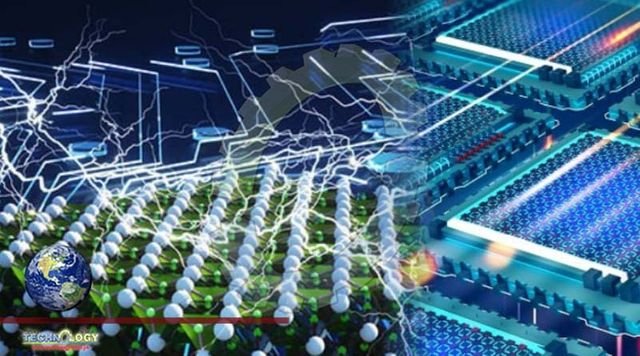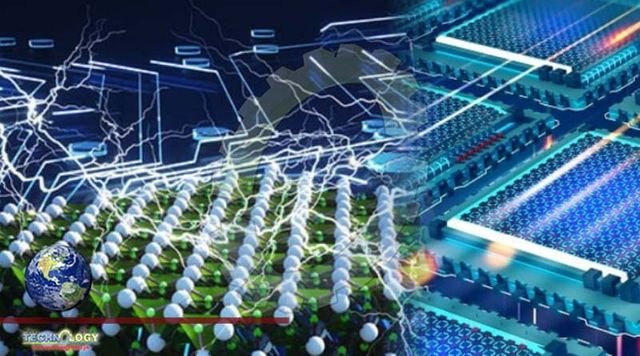By exploiting a curious effect called negative capacitance, researchers have designed a transistor that requires a gate voltage about 30% lower than conventional designs. Led by Sayeef Salahuddin at the University of California, Berkeley, the team based their design around an ultrathin superlattice heterostructure, containing alternating layers of ferroelectric and antiferroelectric materials. The team says that its superlattice could be easily integrated into existing transistor designs, reducing their energy requirements.

As modern computers grow ever more powerful, the energy they consume is also growing with seemingly no end in sight. Slowing this trend will require fundamental changes to traditional transistor designs.
Metal-oxide-semiconductor field-effect transistors (MOSFETs) are ubiquitous in computers and other electronics. They comprise a silicon semiconductor channel through which current can flow between two electrodes. The current flows past a third electrode called the gate, which is separated from the semiconductor channel by an insulating oxide layer. The gate electrode acts like one plate of a capacitor and by varying the voltage applied to the gate, the electronic properties of the silicon can be adjusted. The result is that the current flowing through the channel can be switched on and off.
In their study, Salahuddin’s team sought to improve this design by exploiting negative capacitance. This an effect that Salahuddin first predicted in 2008 and demonstrated experimentally in 2011. It occurs when a decrease in the voltage across a capacitor results in an increase in the charge stored in the device – the opposite of what happens in conventional capacitors.
Negative capacitance arises in ferroelectric materials, whose spontaneous electric polarization can be reoriented with the application of an external electric field. To create negative capacitance, an insulating dielectric material is paired with a ferroelectric material – significantly amplifying the amount of charge that accumulates in a ferroelectric material at a given voltage.
Salahuddin and colleagues have now demonstrated the effect in a new, ultra-thin superlattice material. It comprises alternating, atom-thick layers of the strongly dielectric, ferroelectric material, hafnium dioxide and the antiferroelectric compound zirconium dioxide – which displays zero spontaneous polarization.
To test their material’s capabilities, the researchers deposited a film of the superlattice just 2 nm thick onto a thin glass layer – separating from it from a silicon layer. In the resulting MOSFET, the team found that the gate voltage could be reduced by about 30%, which reduces the energy consumption of the device. The resulting device was able to match the performance of existing transistor designs.
Since hafnium dioxide is already widely used in combination with silicon dioxide to form the insulating layers in MOSFETs, this design is highly compatible with existing manufacturing processes. As a result, Salahuddin and colleagues hope that their material could substantially reduce the amount of energy consumed by modern computers, without sacrificing their speed, performance, or small size.
Source: This news is originally published by physicsworld
